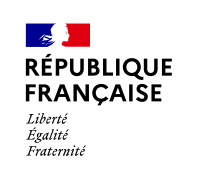좌우명

좌우명(座右銘)은 개인이나 단체, 국가 등에서 특별한 동기 부여를 위해 만드는 표어이다.좌우명이라는 말은 후한(後漢)의 학자 최원(崔瑗)에서 시작되었다. 자리(座)의 오른쪽(右)에 일생의 지침이 될 좋은 글을 '쇠붙이에 새겨 놓고(銘)' 생활의 거울로 삼은 데서 유래되었다.[1]
한편 서양에서는 모토(이탈리아어: Motto, 라틴어: muttum, mutter)[2][3][4]라고 부르는데, 주로 라틴어로 작성되지만 다른 아무 언어로도 작성될 수 있다.
같이 보기
[편집]각주
[편집]- ↑ 한자로 보는 세상 93 : 座右銘[깨진 링크(과거 내용 찾기)]
- ↑ “Motto”. Merriam-Webster. 2011년 1월 31일에 확인함.
- ↑ “Motto”. Oxford University Press. 2011년 3월 19일에 원본 문서에서 보존된 문서. 2011년 1월 31일에 확인함.
- ↑ “Webster's Revised Unabridged Dictionary (1913)”. 《The ARTFL Project》. The University of Chicago. 2013년 12월 6일에 원본 문서에서 보존된 문서. 2013년 12월 20일에 확인함.
Motto

A motto (derived from the Latin muttum, 'mutter', by way of Italian motto, 'word' or 'sentence')[1][2][3][4] is a sentence or phrase expressing a belief or purpose,[1] or the general motivation or intention of an individual, family, social group, or organization.[2][4] Mottos (or mottoes)[1] are usually found predominantly in written form (unlike slogans, which may also be expressed orally), and may stem from long traditions of social foundations, or from significant events, such as a civil war or a revolution. One's motto may be in any language, but Latin has been widely used, especially in the Western world.
Language
[edit]Latin has been very common for mottos in the Western World, but for nation states, their official national language is generally chosen. Examples of using other historical languages in motto language include:
- County of Somerset in England: Sumorsǣte ealle (All the men of Somerset), Old English.[5][6]
- South Cambridgeshire in the English Fens: Niet Zonder Arbyt (Nothing without work), Dutch, originally the motto of Dutchman Cornelius Vermuyden, who drained The Fens in the 17th century.[7][8]
- South Africa: ǃke e: ǀxarra ǁke (Unity in diversity), ǀXam.
- Shire of Shetland: Með lögum skal land byggja (By law shall the land be built up), Old Norse.[9]
A canting motto is one that contains word play.[10] For example, the motto of the Earl of Onslow is Festina lente (literally 'make haste slowly'), punningly interpreting 'on slow'.[11] Similarly, the motto of the Burgh of Tayport, Te oportet alte ferri (It is incumbent on you to carry yourself high), is a cant on 'Tayport at auld Tay Ferry', also alluding to the local lighthouse.[12] The motto of the U.S. Federal Bureau of Investigation, Fidelity, Bravery, Integrity, is a backronym of the letters F.B.I.
List of examples
[edit]
- United in diversity, the motto of the European Union (EU)
- In God We Trust, the motto of the United States (US)
- Je Maintiendrai Châlons (French for "I will maintain Châlons"), often abbreviated as Je maintiendrai (French for "I will maintain"), the motto of the Netherlands
- Dieu et mon droit (French for "God and my right"), is the motto of the monarch of the United Kingdom. It appears on a scroll beneath the shield of the version of the coat of arms of the United Kingdom.
- Unus pro omnibus, omnes pro uno (Latin for "One for all, all for one"), unofficial motto of Switzerland
- Post tenebras lux (Latin for "Light After Darkness"), motto of University of Geneva
- United we stand, divided we fall[clarification needed]
Mottos in heraldry
[edit]| Part of a series on |
| Heraldic achievement |
|---|
| External devices in addition to the central coat of arms |
In heraldry, a motto is often found below the shield in a banderole in the compartment. This placement stems from the Middle Ages, in which the vast majority of nobles possessed a coat of arms complete with a motto. In the case of Scottish heraldry, it is mandated to appear above the crest[13] and is called slogan (see: Slogan (heraldry)). The word 'slogan' is an Anglicisation of the Scottish Gaelic sluagh-ghairm (sluagh "army, host" + gairm "cry").[14] There are several notable slogans which are thought to originate from a battle or war cries. In heraldic literature, the terms 'rallying cry' respectively 'battle banner' are also common.[citation needed] Spanish coats of arms may display a motto in the bordure of the shield.[15]
In English heraldry, mottos are not granted with armorial bearings, and may be adopted and changed at will. In Scottish heraldry, mottos can only be changed by re-matriculation, with the Lord Lyon King of Arms.[16] Although unusual in England, and perhaps outside English heraldic practice, there are some examples, such as in Belgium, of the particular appearance of the motto scroll and letters thereon being blazoned;[17] a prominent example is the obverse of the Great Seal of the United States (which is a coat of arms and follows heraldic conventions), the blazon for which specifies that the motto scroll is held in the beak of the bald eagle serving as the escutcheon's supporter.
Ships and submarines in the Royal Navy (RN) each have a badge and motto, as do units of the Royal Air Force (RAF).[19][ISBN missing]
Mottos in literature
[edit]In literature, a motto is a sentence, phrase, poem, or word; prefixed to an essay, chapter, novel, or the like, suggestive of its subject matter. It is a short, suggestive expression of a guiding principle for the written material that follows.[4]
For example, Robert Louis Stevenson's Travels with a Donkey in the Cévennes uses mottos at the start of each section.[20]
標語

標語(ひょうご)は、ある集団の行動や判断における基準、規範、指針、理念を簡潔に表した文章や言葉や句である。
組織・集団の日常の行動指針を表すモットーやスローガンもこれの一種とされるため、本項ではそれについても詳述する。特に宣伝的な標語はスローガンと呼ばれる。日本で「標語」という場合、これら以外に交通規則や社会運動において、耳に入りやすいかけ声的な短文を指すことも多い。口調がよいように俳句同様に五七五の型を取るものも多い。また、学校等に標語の募集を呼びかける活動もよくある。
モットー
[編集]モットー(伊: motto)とは、社会集団や組織の日常の行動指針を表すことがらや、それを表した言葉のこと。目標として掲げる言葉、信条。
紋章においては、スクロールなどに記される銘文のことを指す。西ヨーロッパでは伝統的にはラテン語で表記されている場合が多い。ギリシャ語主体の東方正統教会の影響が強い東ヨーロッパは別。
スローガン
[編集]スローガン(英: slogan)とは、企業や団体の理念や、運動の目的を、簡潔に言い表した覚えやすい句・標語・モットーのこと。「合言葉」と訳される場合もある[1]。
座右の銘
[編集]座右の銘(ざゆうのめい)とは、集団ではなく、個人が自らの行動の戒めとするために日常的に心に留めておくための言葉。『文選』に収められた後漢の崔瑗(崔子玉)による文章「座右銘」に由来する[2]。



![Motto Deus protector noster (Latin for 'God is our protector') below the arms of Pori[18]](https://upload.wikimedia.org/wikipedia/commons/thumb/c/cb/Porin_vaakuna.svg/102px-Porin_vaakuna.svg.png)

No comments:
Post a Comment